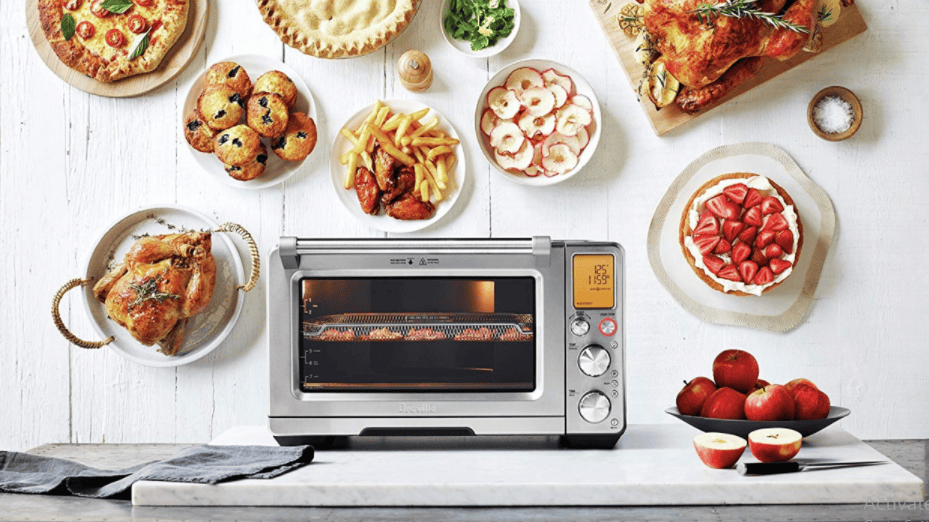
世界のスマートオーブン市場は、2020年のXX百万米ドルから、予測期間(2021年〜2027年)中に妥当なCAGR XX%で拡大し、2027年までにXX百万米ドルの市場評価に達すると予想されています。スマートオーブンは、砂糖の消費に関する健康への懸念の高まりと、いくつかの非栄養性の人工甘味料の安全性に関する疑問の結果として、ますます人気が高まっています。
スマートオーブンの詳細な分析については、こちらをご覧ください– https://univdatos.com/report/smart-ovens-market/
スマートオーブンは、スマートフォンを介してデータを受信、分析、転送できる次世代の調理器具です。スマートオーブンは、BluetoothまたはWi-Fi機能を備えた電気レンジです。スマートオーブンは、他のデバイスまたはアプリに接続されています。消費者は、コンパニオンアプリを使用してスマートオーブンをリモートで操作および制御できます。コンパニオンアプリを使用すると、消費者はスマートオーブンをリモートで制御および調整できます。また、自動機能を設定するためにも使用できます。音声コントロールとスマートホームデバイスに接続されたスマートオーブンが近年導入されています。
さらに、特に幼い子供たちの肥満症例の増加は、テーブルシュガーの代替品として天然甘味料の採用が増加する主な要因です。たとえば、WorldAtlasによると、2019年には、5歳未満の子供3800万人が肥満または太りすぎでした。さらに、肥満は年間約500万人の死亡の原因であり、2017年の世界の死亡の8%を占めており、1990年の4.5%から3.5%増加しています。ただし、その割合は大陸によって異なります。2017年には、北アフリカ、東ヨーロッパ、ラテンアメリカ、中央アジア全体で、死亡の15%以上が肥満の有病率が高いため、肥満が原因でした。これにより、消費者の嗜好が従来の調理から時間のかからない健康的な調理に移行しました。この傾向は、スマートオーブンの需要を押し上げています
スマートオーブンの市場ドライバーの詳細な分析については、こちらをご覧ください
COVID-19のパンデミックは、世界中のサプライチェーンに混乱を引き起こしました。これはスマートオーブンに深刻な影響を与えました。ウイルスの蔓延の拡大により、世界中の多くの国で厳格な封鎖制限が発生しました。ウイルスの蔓延の拡大により、世界中の多くの国で厳格な封鎖制限が発生しました。多くの国で国境が閉鎖された結果、サプライチェーンとロジスティクスが損なわれました。たとえば、RetailNextによると、2020年には、世界の商人の32%が軽微な影響を受けましたが、パンデミックの結果、世界の小売業者のわずか12%が深刻な混乱を経験しました。これにより、世界中の企業や経済活動に大きな混乱が生じており、原材料の輸送の制限または利用不能、およびサービスプロバイダーの混乱により、スマートオーブン市場に短期的な悪影響を与えることが予想されます。この側面により、スマートオーブン市場の成長率が低下しました。一方、食品および飲料業界は、ロックダウンの制限から除外されました。その結果、厳格な封鎖期間中は、成長の小さなつまずきしかありませんでした。ただし、米国農務省(USDA)によると、在宅食品支出(スーパーマーケット、コンビニエンスストア、倉庫クラブストア、スーパーセンター、その他の小売業者から購入した食品)は、ロックダウンにより、2019年の8,080億米ドルから2020年には8,768億米ドルに増加しました。この傾向により、家庭でのスマートオーブンの需要が高まりました。
スマートオーブンに対するCOVID-19の影響の詳細な分析については、こちらをご覧ください
タイプに基づいて、市場は内蔵型とカウンタートップに分類されます。カウンタートップセグメントは2020年に市場を支配し、XX百万米ドルの総収益を生み出しました。その多様な機能特性、費用対効果、および洗練されたデザインにより、グローバル市場での優位性を維持することが予想されます。
スマートオーブンのタイプの詳細な分析については、こちらをご覧ください
接続性に基づいて、市場はWi-Fi、NFC(近距離無線通信)、Bluetooth、IoTなどに分類されます。Wi-Fiセグメントは2020年に市場を支配し、XX百万米ドルの総収益を生み出しました。家庭での採用が増加しているため、予測期間中もその優位性を維持することが予想されます。
スマートオーブンの接続性の詳細な分析については、こちらをご覧ください
アプリケーションに基づいて、市場は住宅用と商業用に分類されます。住宅用セグメントは2020年に市場を支配し、XX百万米ドルの総収益を生み出しました。ロックダウンにより自宅での調理が増加しているため、予測期間中もその優位性を維持することが予想されます。
スマートオーブンのアプリケーションの詳細な分析については、こちらをご覧ください
販売チャネルに基づいて、市場はオンラインとオフラインに分類されます。オフラインセグメントは2020年に市場を支配し、XX百万米ドルの総収益を生み出しました。
スマートオーブンの販売チャネルの詳細な分析については、こちらをご覧ください
エンドユーザーに基づいて、市場はレストラン、グルメカフェ、菓子店、ベーカリーなどに分類されます。レストランセグメントは2020年に市場を支配し、XX百万米ドルの総収益を生み出しました。消費者の食品に対する一人当たりの支出が増加しているため、予測期間中もその優位性を維持することが予想されます。
レポートのサンプルのリクエストについては、こちらをご覧ください– https://univdatos.com/get-a-free-sample-form-php/?product_id=9285
さらに、レポートは、スマートオーブンの分野で実施されている詳細なイニシアチブを提供します。市場は、北米(米国、カナダ、北米のその他)、ヨーロッパ(ドイツ、フランス、イタリア、スペイン、英国、ヨーロッパのその他)、アジア太平洋(中国、日本、インド、オーストラリア、およびAPACのその他)、世界のその他に分類されています。北米は、消費者の多忙なライフスタイルとエネルギー効率の高いデバイスに対する需要の高まりにより、2020年に市場を支配し、XX十億米ドルの収益を生み出しました。
主な主要プレーヤーには、エレクトロラックス、ワールプール、GE(ハイアール)、ボッシュ、パナソニック、三洋電機、シーメンス、サムスン、エマソン、LGが、世界のスマートオーブン市場で事業を展開している著名なプレーヤーの一部です。これらのプレーヤーは、スマートオーブンを開発するために、いくつかのM&Aがパートナーシップとともに実施されています。
グローバルスマートオーブン市場セグメンテーション
タイプ別の市場の洞察
- 組み込み
- カウンタートップ
接続性別の市場の洞察
- Wi-Fi
- NFC(近距離無線通信)
- Bluetooth
- IoT
- その他
アプリケーション別の市場の洞察
- 住宅用
- コマーシャル
販売チャネル別の市場の洞察
- オフラインチャネル
- オンラインチャネル
エンドユーザー別の市場の洞察
- レストラン
- グルメカフェ
- 菓子店
- ベーカリー
- その他
地域別の市場の洞察
- 北米
- アメリカ合衆国
- カナダ
- 北米の残りの部分
- ヨーロッパ
- フランス
- ドイツ
- イタリア
- スペイン
- イギリス
- ヨーロッパの残りの部分
- アジア太平洋地域
- 中国
- 日本
- インド
- オーストラリア
- アジア太平洋地域の残りの部分
- 世界のその他の地域
トップ企業のプロファイル
- GE(ハイアール)
- エレクトロラックス
- ワールプール
- GE(ハイアール)
- ボッシュ
- パナソニック
- 三洋電機
- シーメンス
- サムスン
- エマソン
- LG
コールバック
